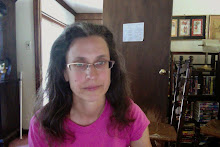Subscribe to:
Post Comments (Atom)
skip to main |
skip to sidebar

Followers
Blog Archive
About Me

- v/vmary
- i'm not a doctor, i'm just giving my experience. i'm not advocating you do anything i do because i know zero about your situation. One of my favorite quotes: “You have been my friend. That in itself is a tremendous thing. I wove my webs for you because I liked you. After all, what's a life, anyway? We're born, we live a little while, we die. A spider's life can't help being something of a mess, with all this trapping and eating flies. By helping you, perhaps I was trying to lift up my life a trifle. Heaven knows anyone's life can stand a little of that.” ― E.B. White, Charlotte's Web
from a homeschooling blog:
ReplyDeleteSome parents will ask: how is it that my Johnny began to show signs of dyslexia in the first grade, before he had had any formal reading instruction? Miller has found the answer to that question. It all starts at home with preschool readers. Miller discovered that when preschoolers memorize as sight words the entire texts of such popular books as Dr. Seuss's The Cat in the Hat and Green Eggs and Ham, they develop a block against seeing the words phonetically and thus become "dyslexic." They become sight readers with a holistic reflex rather than phonetic readers with a phonetic reflex. A holistic reader looks at each word as a little picture, a configuration, much like a Chinese ideograph, and tries to think of the word it represents. A phonetic reader associates letters with sounds and sounds out the syllabic units which blend into an articulated word.
What this means is that parents should teach their children to read phonetically before giving them the Dr. Seuss books to read. They should avoid having their children memorize words by their configurations alone, because once that mode of viewing words becomes an automatic reflex, it will create a block against phonics.
In other words, failure to teach a child to read phonetically, but requiring the child to memorize hundreds of sight words produces educational dyslexia. Incidentally, a sight word, by definition, is a word learned without reference to the sounds the letters stand for. Nowadays, publishers are selling books for preschoolers with audio tapes so that the child can learn to read by the sight method without the help of his or her parents. Thus, the child will develop a reading handicap without the slightest idea that what he or she is doing is harmful.
the above may not be true for all students, but for some it just may be. and as i've said, i was the opposite case. i was taught to read russian through sounding out letters and later could not adapt to my american school's first grade sight word method of teaching reading.
This comment has been removed by the author.
ReplyDelete